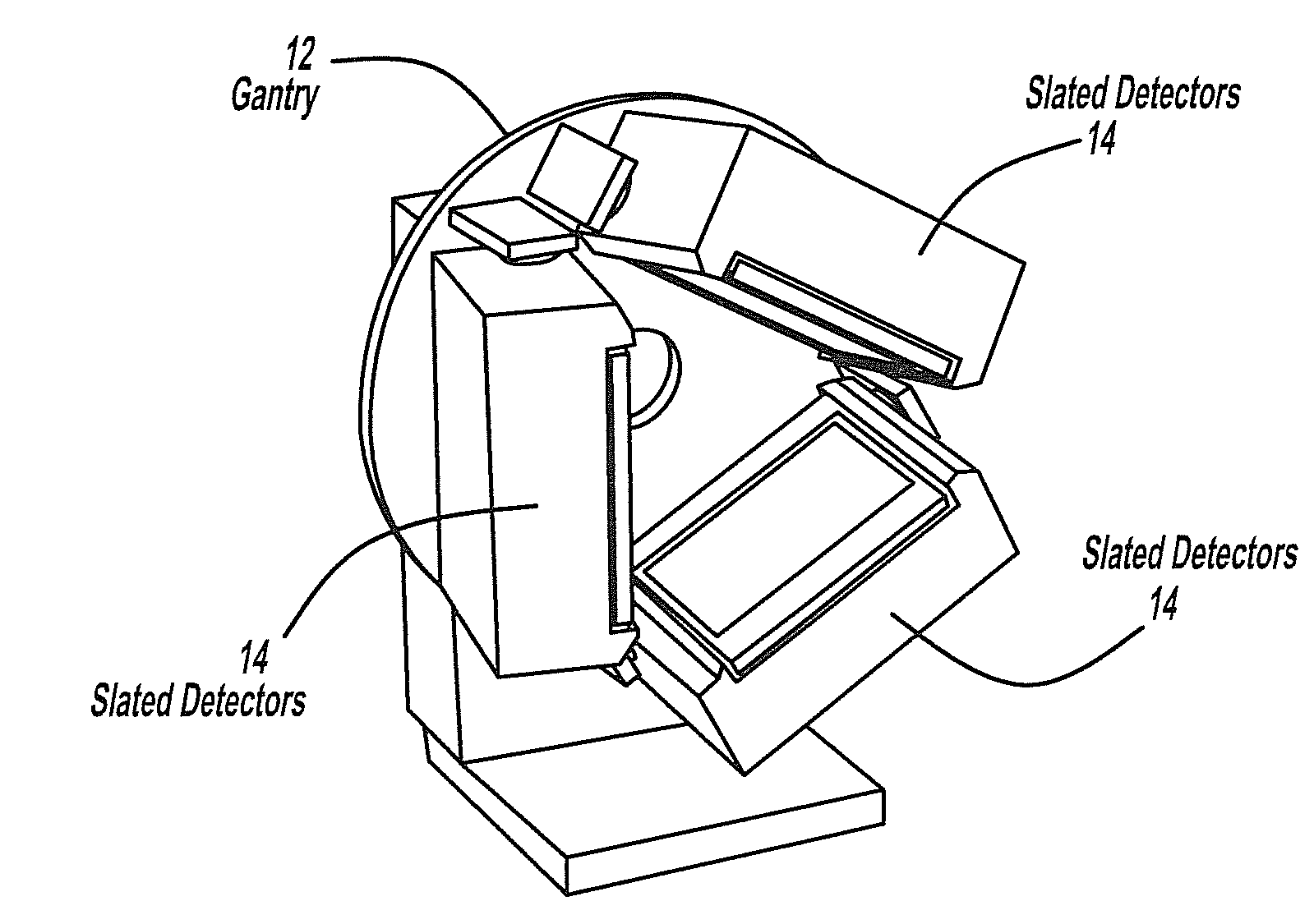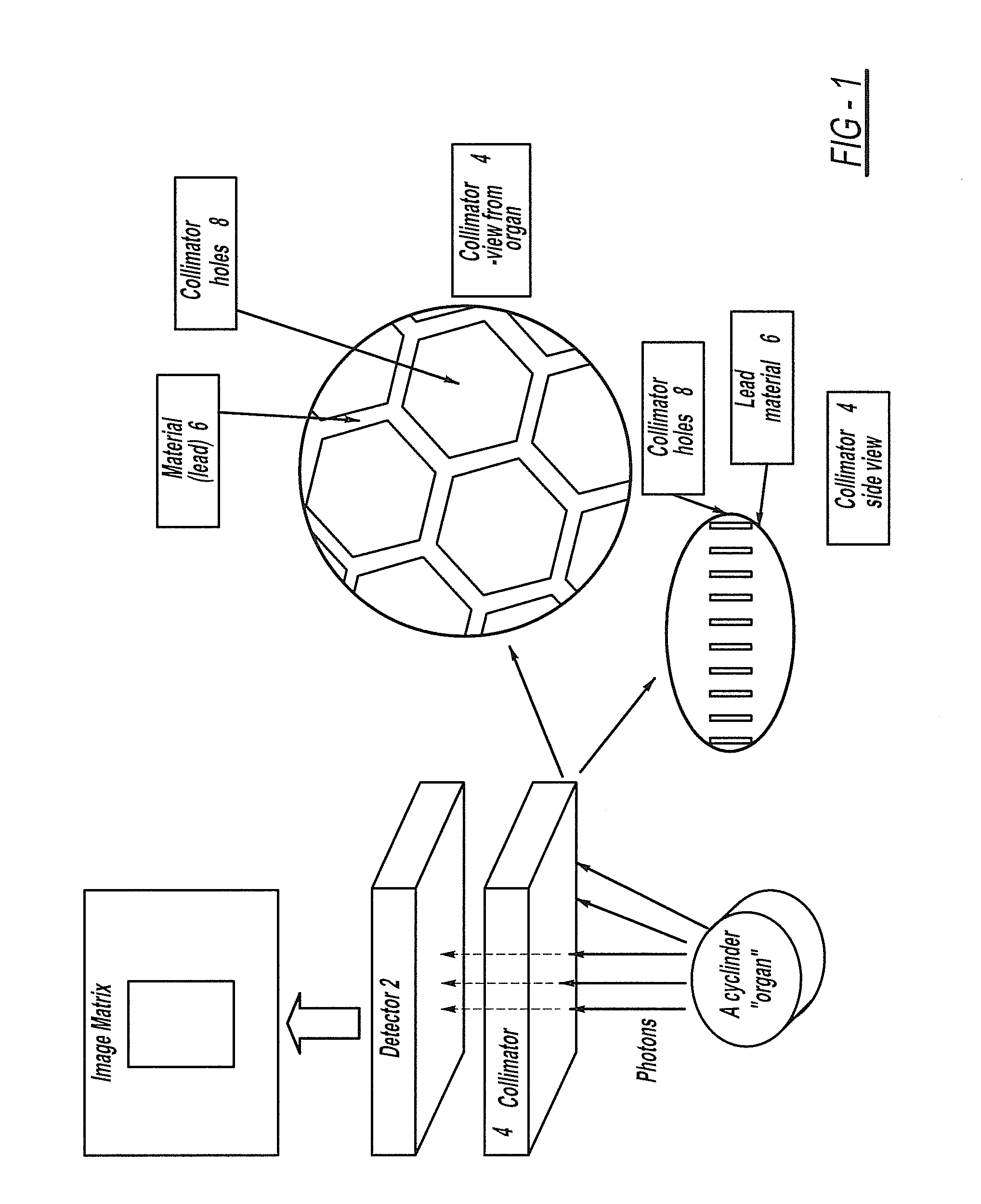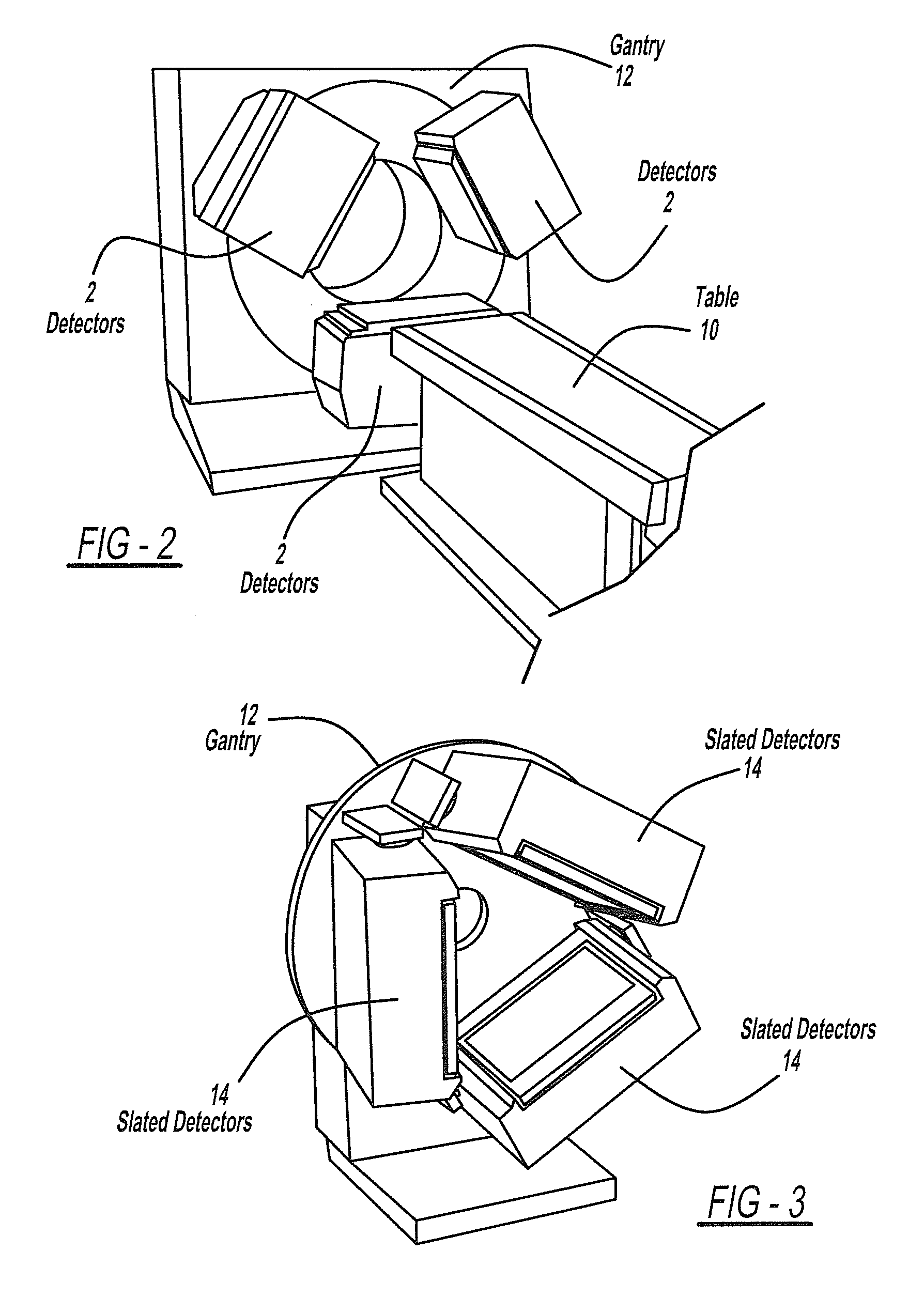Gamma camera system with slanted detectors, slanted collimators, and a support hood
a camera system and detector technology, applied in the field of computerized imaging, can solve the problems of inability to accurately detect the position of the detector, the sensitivity of the collimator infinitely low, and unrealistically long photon acquisition period, so as to improve the camera workflow and output, prevent long hair, and increase patient safety and comfort
- Summary
- Abstract
- Description
- Claims
- Application Information
AI Technical Summary
Benefits of technology
Problems solved by technology
Method used
Image
Examples
Embodiment Construction
[0030]The present invention overcomes the shortcomings of the prior art by presenting a gamma camera dedicated to brain SPECT imaging which is engineered to eliminate the need for radial detector motion and also incorporating a specialized head support device.
[0031]In the present invention, the detectors (14) are mounted at a slanted angle, rather than at an angle perpendicular to the axis of rotation as found in prior art systems, as depicted in FIG. 3. Additionally, the present invention eliminates the detector's radial motion found in prior art systems. The design of the present invention results in the distance from the detector to the axis of rotation decreasing across the detector surface (Y direction). The distance is greatest furthest away from the gantry and smallest at the edge of the detector closest to the gantry. By choosing the detector slant angle and the minimum or maximum distance from the detector to the axis of rotation, the camera can be designed to perform brain...
PUM
 Login to View More
Login to View More Abstract
Description
Claims
Application Information
 Login to View More
Login to View More - R&D
- Intellectual Property
- Life Sciences
- Materials
- Tech Scout
- Unparalleled Data Quality
- Higher Quality Content
- 60% Fewer Hallucinations
Browse by: Latest US Patents, China's latest patents, Technical Efficacy Thesaurus, Application Domain, Technology Topic, Popular Technical Reports.
© 2025 PatSnap. All rights reserved.Legal|Privacy policy|Modern Slavery Act Transparency Statement|Sitemap|About US| Contact US: help@patsnap.com



